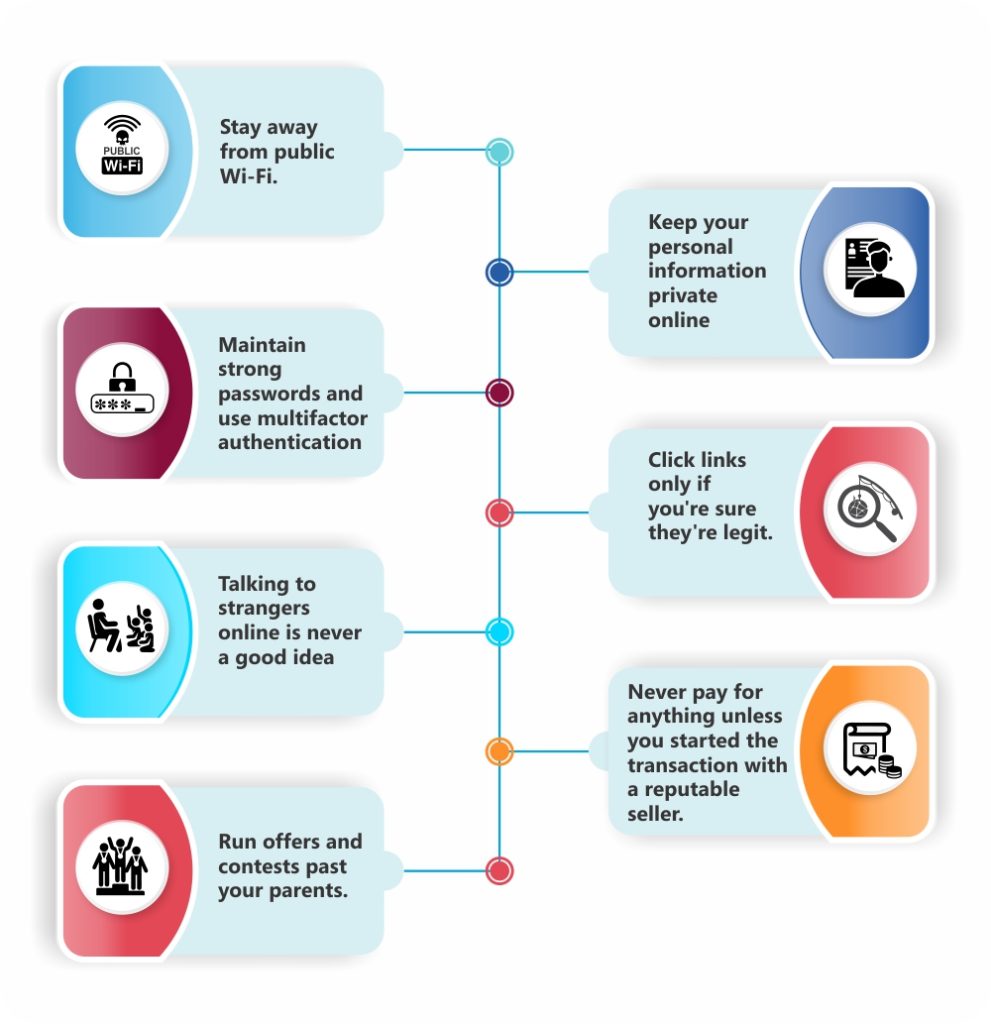Nowadays, parents say that parenting is harder than ever due to screens. Parents are also faced with another big problem when it comes to online scams that target children.
Teach your child about online scams to help them avoid becoming a victim of one. Keep in mind that educating children and teenagers about online scams is not a one-time event. Consider it more like an ongoing conversation, with each lesson building on the previous one.
With that in mind, here are seven methods for teaching children about online scams.
1. Discuss online scams with your child.
Begin by discussing online scams with your children in a two-way conversation. Inquire if they are aware of online scammers and if they can recall any examples of scams. You can learn what they do and don’t know about scams this way. And you can pique their interest by telling them they can help fight the online “bad guys” by donning a detective hat, learning how scammers operate, and keeping an eye out for scams.
2. Teach your children an overview of online scams.
Scammers are constantly inventing new variations on old scams, but the fundamentals remain consistent. There are phishing scams, smishing scams, vishing scams, and even kid-specific scams.
Briefly explain to your child the various types of scams that exist, the main techniques scammers employ, and the goals of scams. Tell them, for example, that scammers may:
- Send you a text message
- Leave you a voicemail
- Send you an email that appears to be from a friend
- Publish an online ad
- Post a scam on social media
It is important to inform them that scammers have a number of goals: getting money, obtaining your personal information so they can steal your identity, taking control of your device or taking over and using your email or social media accounts or to infect your device with eScan Universal Security Suite ( Multi- Device License).
3. Give some examples of scams that target kids.
The best way to teach kids about something new, including online scams, is with a concrete example. Learn about scams that target children and teens in particular.
The following are examples of scams targeted at children.
Prize scams and contest fraud
Scammers are well aware that contest scams are a lucrative way to target children. Several times, people are invited to enter a fake contest or are notified that they have won a big prize. This could be free pizza for a year or an iPad. Entering the contest or claiming the “prize” may require clicking a link or filling out a form.
False freebies and discounts
Kids may receive offers for free toys, brand new products, or excellent deals on electronic items, or other products they desire. There may be a “discounted” item that they never receive that they are required to pay for.
Scholarship scams
Scammers may target children or teens to trick them into applying for scholarships that seem legitimate but are actually scams. In scholarship scams, children may be asked to provide personal information such as their name, address, and Social Security number. They may also be asked to pay a high application fee.
Casting scams or fake talent competitions
A child may be invited to participate in a casting call or talent show for acting, singing, or sports. Scammers use big dreams or the promise of fame and money to entice children to participate in these scams, and they may charge a large entry fee.
For any of these scams, scammers may employ a variety of tactics and pursue a variety of objectives. Tell your child to be wary of any online offer.
4. Help your child understand how to protect digital devices.
When it comes to cybersafety and security, you look out for your entire family as a parent. This includes installing antivirus software on your devices, updating them on a regular basis, and possibly using a VPN for added security. Consider using a reputable security software such as eScan Total Security Suite – v22.
You can use these tasks to educate your kids about cybersecurity and online scams, rather than making them a boring chore. Help your kids choose, install, and update antivirus software. Take advantage of that time together to re-open the discussion about how basic security measures are an essential first step to preventing online scams. When you secure your devices, you’re closing doors through which an internet “bad guy” could enter to target you or your child.
5. Establish family guidelines for device use.
Put cybersecurity guidelines in place for the whole family with the help of your kids. When it comes to online scams, there are a lot of things to keep in mind. Making your child aware of family “rules” makes protecting themselves from scams easier. In addition, your kids will become more invested in following your family guidelines if they are involved in setting them themselves.
Here are some examples of family guidelines you might consider:
By encouraging your child to come to you when they are unsure about an “offer,” you are preparing them for future teaching opportunities.
6. Discuss scams with kids to develop their critical thinking skills.
Your kids can develop critical thinking skills while learning about online scams. Discuss the phrase “too good to be true” with your kids and ask them what it means to them.
Ask hypothetical questions, such as, “What if an iPhone were advertised for $25? What would you do?”?”
As a final step, let your kids come up with ways they might be able to detect scams, such as looking for an offer that seems too good to be true, a link that looks strange, copy with many typos, and phrases such as “act now!”
7. Inspire your kids to teach others.
Encourage your kids to use their newfound knowledge by teaching others about scams, particularly online scams that target kids. This might involve speaking to their friends or doing a report, show-and-tell presentation or other school projects about scams.








